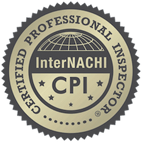What Is Roll Roofing? (Pros & Cons)
Taking good care of your home starts with protecting the roof over your head. Choosing the right roofing material is essential for long-term durability and cost-effectiveness. One roofing option many homeowners consider is roll roofing.
If you’re wondering what roll roofing is, how it works, and whether it’s a good fit for your home, you’re in the right place. In this article, we’ll explain everything you need to know about roll roofing, including its advantages and disadvantages, so you can make an informed decision.
What Is Roll Roofing?
Roll roofing is a type of flexible, waterproof roofing material that comes in long sheets or rolls. It’s typically made from a polymer or asphalt base coated with mineral granules to protect it from the elements. This material is applied in strips, either flat or overlapping, depending on the product type.
Sometimes referred to as tar paper or felt paper, roll roofing is used in both commercial and residential settings, though it is more common for smaller or outbuilding roofs rather than main residential roofs.
How Is Roll Roofing Used?
Roll roofing is especially popular for:
- Garages
- Sheds
- Workshops
- Low-slope or flat roofs
It works best on roofs with gentle slopes because the material isn’t designed to handle rapid water runoff like traditional shingles or tiles. Because it is lightweight, it puts less stress on the structure, making it ideal for smaller buildings or areas where additional roof support isn’t feasible.
Pros of Roll Roofing
1. Cost-Effective Solution
One of roll roofing’s biggest advantages is affordability. It costs less than many other roofing materials such as asphalt shingles, metal, or tile. This makes it a great option for homeowners on a tight budget or for temporary roofing needs.
2. Easy Installation
Roll roofing is straightforward to install. It comes in large sheets or rolls, which means fewer pieces to handle compared to individual shingles. Homeowners with basic DIY skills can sometimes install roll roofing themselves, saving on labor costs.
3. Lightweight Material
Because roll roofing is lighter than many other options, it requires less structural support. This makes it suitable for older or weaker roof decks that may not handle heavier materials well.
4. Waterproof and Mold Resistant
Roll roofing is designed to be waterproof, protecting your home from rain and moisture. It also resists mold, mildew, and UV damage, which helps prevent common roofing problems that can lead to costly repairs.
5. Flexible for Different Applications
Roll roofing can be cut and shaped to fit various roof designs, including ridges, hips, eaves, and rakes. Its flexibility allows for easier installation on oddly shaped roofs or smaller sections.
6. Cold Weather Resistant
In colder climates, roll roofing performs well as it remains flexible and doesn’t crack easily in low temperatures. This makes it a good option in regions with wide temperature variations.
Cons of Roll Roofing
1. Limited Lifespan
Roll roofing typically lasts between 5 to 8 years in mild climates, which is shorter than many other roofing materials like asphalt shingles or metal roofing. Depending on your local climate and maintenance, you might need to replace it sooner.
2. Less Attractive Appearance
A major drawback for many homeowners is the aesthetic appeal. Roll roofing has a plain look, often limited to black or white colors, which may not complement the design of your home. Some homeowner associations (HOAs) restrict or prohibit its use due to appearance concerns.
3. Not Suitable for Steep Roofs
Roll roofing is designed for low-slope roofs. If your roof pitch is steep, this material will not perform well and could lead to leaks or early failure. For steeper roofs, traditional shingles or tiles are more appropriate.
4. Vulnerable to Weather Damage
While roll roofing is waterproof, it can be easily damaged by strong winds, hail, or extreme temperature swings. Over time, exposure to harsh weather can cause cracks, tears, or loosening, which reduces its effectiveness.
5. Requires Regular Maintenance
To extend the life of roll roofing, regular inspections and maintenance are necessary. This includes checking for tears, resealing edges, and clearing debris. Without proper upkeep, the material can deteriorate faster.
Is Roll Roofing Right for Your Home?
Roll roofing offers a good balance of cost savings and ease of installation, making it a practical choice for certain homes and buildings, especially with low-sloped roofs or limited budgets. However, it’s important to understand its limitations, including a shorter lifespan and potential appearance concerns.
If you have a steep roof, want a longer-lasting solution, or prioritize curb appeal, you may want to consider other roofing materials.
Why Professional Roof Inspection Matters
Before deciding on roll roofing or any roofing material, it’s crucial to have a professional roof inspection. Certified inspectors, like those at Guardian Angel Inspections, assess your roof’s condition, slope, and structure to recommend the best roofing option for your property.
Professional inspections help uncover hidden damage and ensure your roofing choice will protect your home effectively for years to come.
Schedule Your Roof Inspection Today
If you’re unsure about your roofing needs or want expert advice on roll roofing or other materials, contact Guardian Angel Inspections. We are Central and South Florida’s trusted roofing inspection experts with years of experience.
Our thorough inspections provide clear, honest reports to guide your roofing decisions. Call us today at
561-512-7854 or fill out our
contact form to schedule your consultation. Protect your home with confidence.
FAQs About Roll Roofing
What are the main benefits of using roll roofing?
Roll roofing is affordable, easy to install, lightweight, waterproof, and resistant to mold and UV damage, making it a practical choice for budget-conscious projects.
What are the biggest drawbacks of roll roofing?
Its shorter lifespan, limited color and style options, and vulnerability to wind and extreme temperatures can be significant downsides for many homeowners.
Is roll roofing a good option for my home’s main roof?
Roll roofing is best suited for low-slope or secondary roofs like sheds and garages. For primary roofs, more durable and visually appealing materials are usually better.
How does climate affect the durability of roll roofing?
Roll roofing tends to last longer in cooler, milder climates but may deteriorate faster in hot, humid, or storm-prone areas due to heat damage and weather wear.
Can roll roofing help prevent mold and mildew on my roof?
Yes, roll roofing’s waterproof properties and resistance to mold and mildew make it effective in protecting against moisture-related roof issues.
Disclaimer: The information on this website and blog is for general informational purposes only and is not professional advice. We make no guarantees of accuracy or completeness. We disclaim all liability for errors, omissions, or reliance on this content. Always consult a qualified professional for specific guidance.
Share this entry







